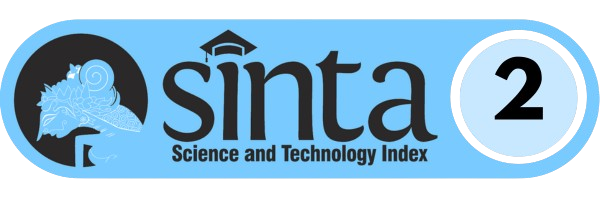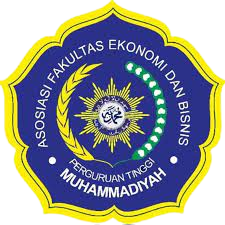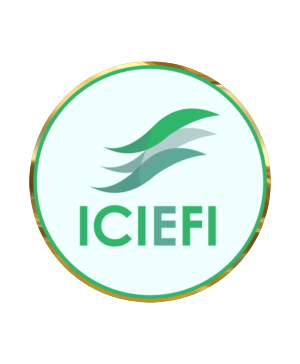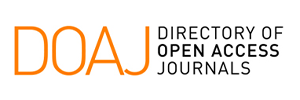Structural Transformation in the Indonesian Economy: Why does 'Financial Development' Matter?
DOI:
https://doi.org/10.24269/ekuilibrium.v19i2.2024.pp213-222Abstract
This study offers a comprehensive examination of Indonesia's process of changing its economic structure from 2000 to 2020. Structural transformation, characterized by changes in the distribution of jobs among different sectors, is crucial for fostering economic growth. It emphasizes phenomena such as the decrease in agricultural GDP shares, rural-urban migration and shifts in economic sectors, which resemble the patterns observed in emerging countries. Nevertheless, the rate of employment transformation is comparatively slower than the fluctuations in GDP, suggesting a more gradual and protracted process of structural change. The analysis focuses on obstacles to transformation, such as insufficient personnel and digital infrastructure. The study examines the relationships between structural transformation and economic indicators in the provinces of Indonesia from 2011 to 2022, utilizing panel data regression models. The findings indicate strong correlations between economic development, human capital, financial development, digital technology, and structural transformation. The study highlights the significance of tackling these elements to accelerate transformation. The policy implications of this proposal suggest that Indonesia should prioritize economic and digital growth, improve human capital, and strengthen the financial sector. This will lead to a more rapid and comprehensive structural transformation in the country.
References
Anderson, K., & Ponnusamy, S. (2019). Structural transformation to manufacturing and services: What role for trade? Asian Development Review, 36(2), 32–71. https://doi.org/10.1162/adev_a_00131
Atolia, M., Loungani, P., Marquis, M., & Papageorgiou, C. (2020). Rethinking development policy: What remains of structural transformation? In World Development (Vol. 128). Elsevier Ltd. https://doi.org/10.1016/j.worlddev.2019.104834
Avoumatodo, K. (2023). Financial development, globalization, and structural transformation in developing countries. https://doi.org/10.13140/RG.2.2.18841.39525
Baymul, C., & Sen, K. (2020). Was Kuznets right? New evidence on the relationship between structural transformation and inequality. Journal of Development Studies, 56(9), 1643–1662. https://doi.org/10.1080/00220388.2019.1702161
Bilan, Y., Mishchuk, H., Samoliuk, N., & Yurchyk, H. (2020). Impact of Income Distribution on Social and Economic Well-Being of the State. Sustainability (Switzerland), 12(1). https://doi.org/10.3390/su12010429
Buera, F. J., & Kaboski, J. P. (2012). The Rise of the Service Economy. American Economic Review, 102(6), 2540–2569. https://doi.org/10.1257/aer.102.6.2540
Chenery, H. (1981). Structural change and development policy. The Journal of Asian Studies, 40(2), 329–331. https://doi.org/10.2307/2054868
Chunan-Pole, P., Ferreira, F. H. G., Christiaensen, L., Kambou, G., Angwafo, M., Pardo, C. G., Korman, V., Popova, A., & Bultano, M. (2014). Africa’s pulse: An analysis of issues shaping Africa’s economic future.
Dabla-Norris, E., Thomas, A., Garcia-Verdu, R., Chen, Y., Bredenkamp, H., Loungani, P., & Peralta-Alva, A. (2013). Benchmarking structural transformation across the world.
Dartanto, T., Yuan, Z. W., & Sofiyandi, Y. (2017). Two decades of structural transformation and dynamics of income equality in Indonesia. https://www.adb.org/publications/two-
Ding, Y. Y., Li, Z., Ge, X., & Hu, Y. (2020). Empirical analysis of the synergy of the three sectors’ development and labor employment. Technological Forecasting and Social Change, 160. https://doi.org/10.1016/j.techfore.2020.120223
Diwakar, V., Lemma, A., Shepherd, A., & Willem te Velde, D. (2019). Economic transformation and poverty.
Dwi Amalia, A., & Citra Melati, F. (2021). Analysis of MSMEs Recovery using Digital Technology in the Covid-19 Pandemic Era. Jurnal Ilmiah Bidang Ilmu Ekonomi, 16(2), 117–128. http://journal.umpo.ac.id/index.php/ekuilibrium
George, T. (2020). A new look at agricultural development and the non-agriculture economy in low-income countries. In Global Food Security (Vol. 26). Elsevier B.V. https://doi.org/10.1016/j.gfs.2020.100449
Harbison, F. H. (1973). Human Resources as the Wealth of Nations. Oxford University Press.
Herrendorf, B., Rogerson, R., Valentinyi, Ã., Caselli, F., Ngai, R., Schoellman, T., Ventura, G., & Carey, W. P. (2013). Growth and structural transformation (18996). http://www.nber.org/papers/w18996.ack
Indrawati, S. M., & Kuncoro, A. (2021). Improving Competitiveness Through Vocational and Higher Education: Indonesia’s Vision For Human Capital Development In 2019–2024. Bulletin of Indonesian Economic Studies, 57(1), 29–59. https://doi.org/10.1080/00074918.2021.1909692
Kanbur, R. (2017). Structural transformation and income distribution: Kuznets and beyond (266). https://www.afdb.org/en/documents/publications/working-paper-series/
Kuznets, S. (1955). Economic growth and income inequality. American Economic Association, 45(1), 1–28.
Lewis, W. A. (1954). Economic development with unlimited supplies of labour.
Liu, S., & Wang, B. (2022). The decline in agricultural share and agricultural industrialization—some stylized facts and theoretical explanations. China Agricultural Economic Review, 14(3), 469–493. https://doi.org/10.1108/CAER-12-2021-0254
López Jerez, M. (2022). Factor endowments, vent for surplus and involutionary process in rural developing economies. Economic History of Developing Regions, 37(1), 50–74. https://doi.org/10.1080/20780389.2021.1957825
Matthess, M., & Kunkel, S. (2020). Structural change and digitalization in developing countries: Conceptually linking the two transformations. Technology in Society, 63. https://doi.org/10.1016/j.techsoc.2020.101428
Melo, J. De, & Solleder, J.-M. (2022). Structural transformation in MENA and SSA: The role of digitalization (1547). www.erf.org.eg
Nafziger, E. Wayne. (2012). Economic development (5th ed.). Cambridge University Press.
Ndulu, B., Stuart, E., Dercon, S., & Knaack, P. (2023). Driving digital transformation: Lessons from seven developing countries. Oxford University Press. https://academic.oup.com/book/45785
Nwani, C., Okezie, B. N., Nwali, A. C., Nwokeiwu, J., Duruzor, G. I., & Eze, O. N. (2023). Natural resources, financial development and structural transformation in Sub-Saharan Africa. Heliyon, 9(9). https://doi.org/10.1016/j.heliyon.2023.e19522
Perkins D. H., Radelet S. C., Lindauer D. L., & Block S. A. (2013). Economics of development (7th ed.). Norton.
Porzio, T., Rossi, F., & Santangelo, G. (2022). The Human Side of Structural Transformation. American Economic Review, 112(8), 2774–2814. https://doi.org/10.1257/aer.20201157
Rothbarth, E., & Clark, C. (1941). The Conditions of Economic Progress. The Economic Journal, 51(201), 120. https://doi.org/10.2307/2225658
Runtunuwu, P. C. H., Mazelan, N. A., & Rajasekera, J. (2023). Analysis of Government Funding Performance on Economic Growth and Human Development Index in Indonesia. Jurnal Ilmiah Bidang Ilmu Ekonomi, 18(2), 136–148. http://journal.umpo.ac.id/index.php/ekuilibrium
Sander, F. G., & Yoong, P. S. (2020). Structural transformation and labor productivity in Indonesia: Where are all the good jobs?
Sen, K. (2016). The determinants of structural transformation in Asia: A review of the literature (478). www.adb.org
Su, J., Su, K., & Wang, S. (2021). Does the digital economy promote industrial structural upgrading?—a test of mediating effects based on heterogeneous technological innovation. Sustainability (Switzerland), 13(18). https://doi.org/10.3390/su131810105
Timmer, C. P. (1988). The agricultural transformation. In Handbook of Development Economics (pp. 275–331).
Timmer, C. P., & Akkus, S. (2008). The structural transformation as a pathway out of poverty: Analytics, empirics and politics (150). www.cgdev.org
Woldemichael, A., & Shimeles, A. (2019). Human capital, productivity, and structural transformation (329). https://www.afdb.org/en/documents/publications/working-paper-series/
Zhou, X., Cai, Z., Tan, K. H., Zhang, L., Du, J., & Song, M. (2021). Technological innovation and structural change for economic development in China as an emerging market. Technological Forecasting and Social Change, 167. https://doi.org/10.1016/j.techfore.2021.120671
Zuhroh, I., & Harpiyansa. (2022). Global Crisis and Economic Fundamentals: Its Impact on Foreign Direct Investment in ASEAN Countries. Ekuilibrium: Jurnal Ilmiah Bidang Ilmu Ekonomi, 17(1), 91–101. http://journal.umpo.ac.id/index.php/ekuilibrium
Downloads
Published
How to Cite
Issue
Section
License
Retained Rights/Terms and Conditions of Publication
1. As an author you (or your employer or institution) may do the following:
- make copies (print or electronic) of the article for your own personal use, including for your own classroom teaching use;
- make copies and distribute such copies (including through e-mail) of the article to research colleagues, for the personal use by such colleagues (but not commercially or systematically, e.g. via an e-mail list or list server);
- present the article at a meeting or conference and to distribute copies of the article to the delegates attending such meeting;
- for your employer, if the article is a ‘work for hire’, made within the scope of your employment, your employer may use all or part of the information in the article for other intra-company use (e.g. training);
- retain patent and trademark rights and rights to any process, procedure, or article of manufacture described in the article;
- include the article in full or in part in a thesis or dissertation (provided that this is not to be published commercially);
- use the article or any part thereof in a printed compilation of your works, such as collected writings or lecture notes (subsequent to publication of the article in the journal); and prepare other derivative works, to extend the article into book-length form, or to otherwise re-use portions or excerpts in other works, with full acknowledgement of its original publication in the journal;
- may reproduce or authorize others to reproduce the article, material extracted from the article, or derivative works for the author's personal use or for company use, provided that the source and the copyright notice are indicated, the copies are not used in any way that implies RCEPM-LIPI endorsement of a product or service of any employer, and the copies themselves are not offered for sale.
All copies, print or electronic, or other use of the paper or article must include the appropriate bibliographic citation for the article's publication in the journal.
2. Requests from third parties
Although authors are permitted to re-use all or portions of the article in other works, this does not include granting third-party requests for reprinting, republishing, or other types of re-use. Requests for all uses not included above, including the authorization of third parties to reproduce or otherwise use all or part of the article.
3. Author Online Use
- Personal Servers. Authors and/or their employers shall have the right to post the accepted version of articles pre-print version of the article, or revised personal version of the final text of the article (to reflect changes made in the peer review and editing process) on their own personal servers or the servers of their institutions or employers without permission from Universitas Muhamamdiyah Ponorogo, provided that the posted version includes a prominently displayed Universitas Muhamamdiyah Ponorogo copyright notice and, when published, a full citation to the original publication, including a link to the article abstract in the journal homepage. Authors shall not post the final, published versions of their papers;
- Classroom or Internal Training Use. An author is expressly permitted to post any portion of the accepted version of his/her own articles on the author's personal web site or the servers of the author's institution or company in connection with the author's teaching, training, or work responsibilities, provided that the appropriate copyright, credit, and reuse notices appear prominently with the posted material. Examples of permitted uses are lecture materials, course packs, e-reserves, conference presentations, or in-house training courses;
- Electronic Preprints. Before submitting an article to an Ekuilibrium: Jurnal Ilmiah Bidang Ilmu Ekonomi, authors frequently post their manuscripts to their own web site, their employer's site, or to another server that invites constructive comment from colleagues. Upon submission of an article to Ekuilibrium: Jurnal Ilmiah Bidang Ilmu Ekonomi, an author is required to transfer copyright in the article to Economy Faculty Universitas Muhammadiyah Ponorogo, and the author must update any previously posted version of the article with a prominently displayed Economy Faculty Universitas Muhammadiyah Ponorogo copyright notice. Upon publication of an article by the Universitas Muhammadiyah Ponorogo, the author must replace any previously posted electronic versions of the article with either (1) the full citation to the work with a Digital Object Identifier (DOI) or link to the article abstract in Ekuilibrium: Jurnal Ilmiah Bidang Ilmu Ekonomi journal homepage, or (2) the accepted version only (not the final, published version), including the Economy Faculty Universitas Muhammadiyah Ponorogo copyright notice and full citation, with a link to the final, published article in journal homepage.
4. Articles in Press (AiP) service
Economy Faculty Universitas Muhammadiyah Ponorogo may choose to publish an abstract or portions of the paper before we publish it in the journal. Please contact our Production department immediately if you do not want us to make any such prior publication for any reason, including disclosure of a patentable invention.
5. Author/Employer Rights
If you are employed and prepared the article on a subject within the scope of your employment, the copyright in the article belongs to your employer as a work-for-hire. In that case, Economy Faculty Universitas Muhammadiyah Ponorogo assumes that when you sign this Form, you are authorized to do so by your employer and that your employer has consented to the transfer of copyright, to the representation and warranty of publication rights, and to all other terms and conditions of this Form. If such authorization and consent has not been given to you, an authorized representative of your employer should sign this Form as the Author.
6. RCEPM-LIPI Copyright Ownership
It is the formal policy of Economy Faculty Universitas Muhammadiyah Ponorogo to own the copyrights to all copyrightable material in its technical publications and to the individual contributions contained therein, in order to protect the interests of the Economy Faculty Universitas Muhammadiyah Ponorogo, its authors and their employers, and, at the same time, to facilitate the appropriate re-use of this material by others. Economy Faculty Universitas Muhammadiyah Ponorogo distributes its technical publications throughout the world and does so by various means such as hard copy, microfiche, microfilm, and electronic media. It also abstracts and may translate its publications, and articles contained therein, for inclusion in various compendiums, collective works, databases and similar publication.
7. Licensing Terms
Ekuilibrium is licensed under a Creative Commons Attribution-ShareAlike 4.0 International License.
Permissions beyond the scope of this license may be available at https://journal.umpo.ac.id/











